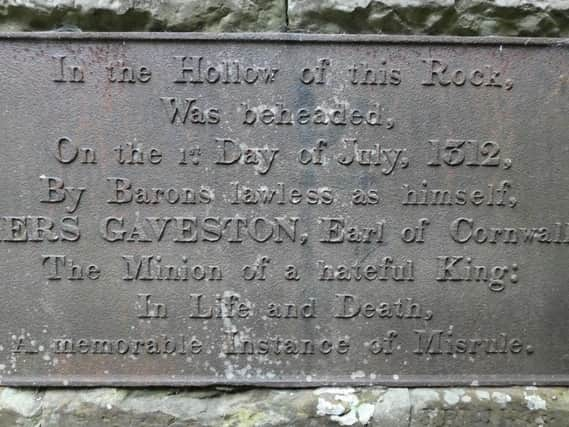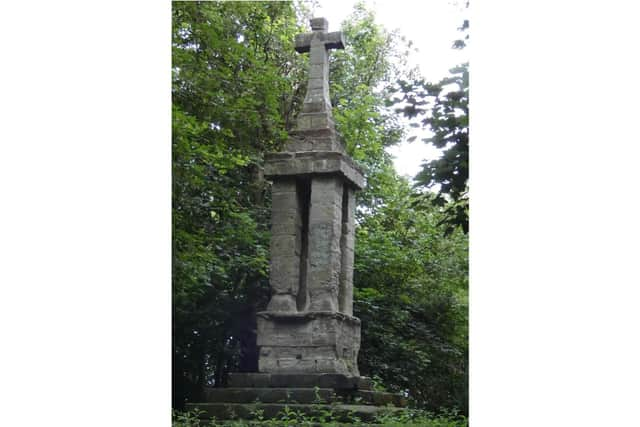Forgotten local histories: Hidden memorials that recall an execution near Leek Wootton


George Evans-Hulme is an academically trained historian and researcher for the Kenilworth History and Archaeology Society. Over the next few weeks he will be looking at sites or buildings with local historic significance. This week carries on with his history of Blacklow Hill, specially looking at the memorials.
The Memorials on Blacklow Hill – The Gaveston Cross
If one wanders through the dark evergreen trees on Blacklow Hill, situated next to the A46 just outside of Leek Wootton, one is likely to stumble across two memorials to a largely forgotten local event. These are the memorials that recall the execution of Piers Gaveston, the favourite courtier of King Edward II who was discussed in last week’s column. They also serve as a source of excitement for many younger historians in the Parish, especially as the more physically imposing monument looms out of the distance as one approaches the summit of the hill.


Advertisement
Hide AdAdvertisement
Hide AdThere is evidence that a memorial to the execution has existed on Blacklow Hill since at least the 17th century. According to Dugdale (writing in 1656), this monument simply consisted of a written inscription carved into the rock near the summit of the hill that read: ‘P. Gaveston, Earl of Cornwall, Beheaded Here, 1311’; however, this inscription is incorrect as Gaveston was actually executed in 1312. Although now slightly obscured by the ravages of age and a nearby, overgrown holly bush, a memorial bearing the same description can still be seen etched into the rock underneath the more prominent Gaveston cross.
The Gaveston cross was erected on the summit of Blacklow Hill by Bertie Greatheed (of Guy’s Cliffe) in the 1820s. The cross consists of a square base that rests on a plinth of five stairs. From the corners of the base sprout four square pillars that support a stone slab and, at the pinnacle, a heavy stone cross. The monument is, in total, 25 feet high and is built of sandstone. The memorial base bears an inscription recalling the execution of Piers Gaveston, and it too records the incorrect date of the event. The cross lists the date of the execution as ‘1 st July 1312’ when the actual date of the execution was two weeks before, on June 19.
There is some confusion surrounding the date of the erection of the cross. Some prominent sources, including Historic England, suggest the cross was put in place in 1832. However, I suspect this is unlikely as both Bertie Greatheed, the commissioner, and the writer Samuel Parr (the person who wrote the inscription), had been dead for over five years by this date. Therefore, it is more likely that the cross was erected in the early 1820s (possibly between 1821-1824) whilst both men were still alive.
The Gaveston cross is officially closed to the public (although one can see the remnants of past visitors in the various graffiti inscriptions left behind on the structure itself). Both the cross, and the inscription in the rock underneath it, still stand as testimonies to a local event which had important political ramifications at a national level. However, the two memorials are slowly succumbing to
their constant exposure to the elements so one wonders if a proactive conservation strategy should be explored in order to preserve them for the future.